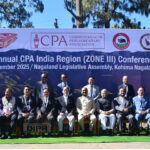Mass immigration and migration have long shaped the socio-political landscape of nations across the globe. While these movements can bring economic growth and cultural diversity, they have also often resulted in the displacement and marginalization of indigenous populations. History offers numerous examples of how the arrival of new settlers or immigrants has pushed native peoples from their lands, fundamentally altering their way of life.
One of the most prominent instances is the European colonization of the Americas. The influx of European settlers in the 15th century led to the systematic displacement of Indigenous populations through warfare, land seizures, and treaties that were rarely upheld. Native peoples were not only forced from their ancestral lands but also subjected to cultural assimilation and erasure, effects that still reverberate in present-day inequalities faced by many Indigenous communities.
Similarly, in Australia, British colonization had devastating effects on Aboriginal populations. European settlers took control of vast territories, displacing Aboriginal people and imposing a foreign governance structure that disregarded Indigenous traditions and land management practices. This pattern of displacement was repeated in Africa, where French and British colonizers disrupted the lives of native populations by imposing colonial rule and exploiting local resources.
In modern times, the establishment of the state of Israel in 1948 led to the displacement of hundreds of thousands of Palestinian Arabs, an event known as the Nakba (“catastrophe”). Many Palestinians fled or were expelled from their homes during the Arab-Israeli War, creating a refugee crisis that continues to shape the conflict today. In turn, Jewish communities in Arab countries faced persecution, leading to mass emigration to Israel. Likewise, the influx of Han Chinese settlers into Tibet and Xinjiang has led to significant displacement of local populations, contributing to cultural and economic marginalization.
The partition of British India into the independent nations of India and Pakistan (later including Bangladesh) in 1947 led to one of the largest mass migrations in history. Approximately 10–15 million people were displaced as Muslims moved to Pakistan, and Hindus and Sikhs migrated to India. Violent communal riots, land seizures, and forced relocations contributed to this massive population displacement. Migration from East Pakistan (now Bangladesh) has also caused irreversible demographic change in northeast India, which is still continuing.
While there may be various types and causes of migration, the displacement of indigenous populations often results in long-term consequences for their economic, cultural, and social well-being. It is crucial that we remember these histories and advocate for policies that respect the rights of indigenous peoples.



